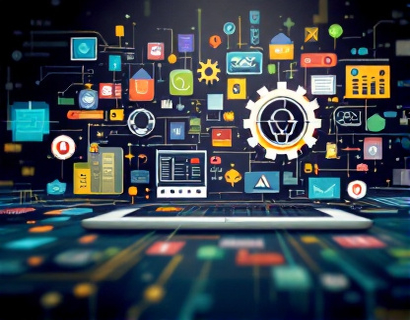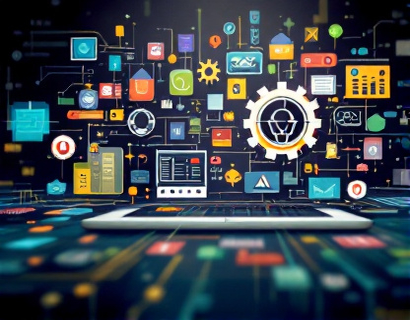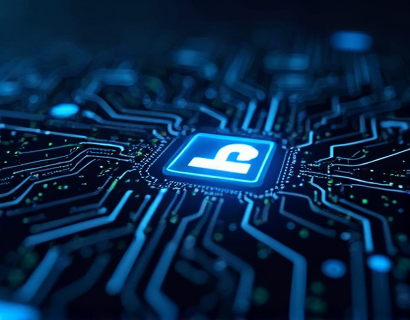AI & Blockchain Integration: Essential Resources for Business Users to Drive Digital Success
The integration of Artificial Intelligence (AI) and Blockchain technology represents a pivotal shift in the digital landscape, offering businesses unprecedented opportunities to streamline operations, enhance security, and unlock new growth avenues. As companies navigate the complexities of digital transformation, understanding how to effectively combine these technologies is crucial. This guide serves as an essential resource for business leaders aiming to harness the full potential of AI and Blockchain, providing actionable strategies and insights to drive success in the digital age.
Understanding AI and Blockchain
Before delving into integration strategies, it's vital to grasp the fundamental concepts of AI and Blockchain. AI refers to the simulation of human intelligence processes by machines, particularly computer systems. These processes include learning (the acquisition of information and rules for using it), reasoning (using rules to reach approximate or definite conclusions), and self-correction. AI technologies encompass machine learning, natural language processing, and computer vision, among others.
Blockchain, on the other hand, is a decentralized digital ledger technology that records transactions across multiple computers in such a way that the registered transactions cannot be altered retroactively. This technology ensures transparency, security, and immutability, making it ideal for applications requiring trust and traceability.
Benefits of AI & Blockchain Integration
The synergy between AI and Blockchain creates a powerful combination that can revolutionize various industries. Here are some key benefits:
- Enhanced Security: Blockchain's inherent security features, combined with AI's advanced threat detection capabilities, create a robust defense against cyber threats.
- Improved Efficiency:
- Increased Transparency:
- Innovative Business Models:
AI can automate and optimize processes, while Blockchain ensures seamless and secure data exchange, reducing manual interventions and errors.
Blockchain's transparent nature, augmented by AI's data analysis, fosters trust and accountability in business transactions and operations.
The integration enables the creation of new services and products, such as decentralized applications and smart contracts, opening up new revenue streams.
Challenges in AI & Blockchain Integration
Despite the numerous benefits, integrating AI and Blockchain comes with its own set of challenges:
- Technical Complexity:
- Scalability Issues:
- Regulatory Uncertainty:
- Data Privacy Concerns:
Both technologies are advanced and require specialized knowledge to implement effectively.
Current Blockchain networks may struggle with the high computational demands of AI applications.
The evolving nature of regulations around AI and Blockchain can pose compliance challenges.
Ensuring user data privacy while leveraging AI and Blockchain requires careful consideration and robust solutions.
Actionable Strategies for Integration
To successfully integrate AI and Blockchain, businesses should consider the following strategies:
1. Assess Current Infrastructure
Begin by evaluating your existing IT infrastructure to identify areas where AI and Blockchain can add value. This assessment should cover current systems, data management practices, and security protocols.
2. Define Clear Objectives
Clearly define what you aim to achieve through the integration. Whether it's enhancing security, improving operational efficiency, or creating new business models, having specific goals will guide your implementation process.
3. Start Small
Pilot projects can help test the waters without overcommitting resources. Start with a small, well-defined use case to understand the benefits and challenges firsthand.
4. Invest in Talent and Training
Building a team with expertise in both AI and Blockchain is crucial. Invest in training for existing staff or hire professionals who can bridge the gap between these technologies.
5. Leverage Open Source Tools
Utilize open source platforms and frameworks that support AI and Blockchain development. This can reduce costs and accelerate the development process.
6. Ensure Data Quality and Management
High-quality, well-managed data is essential for AI algorithms and Blockchain transactions. Implement robust data governance practices to maintain integrity and reliability.
7. Focus on Security and Compliance
Integrate security measures from the outset, considering both AI and Blockchain aspects. Stay informed about regulatory requirements and ensure compliance to avoid legal issues.
8. Foster Collaboration
Collaborate with other businesses, research institutions, and technology providers to share knowledge, resources, and best practices. This can accelerate innovation and problem-solving.
Tools and Resources
Several tools and resources can aid in the AI and Blockchain integration journey:
AI Frameworks and Platforms
- TensorFlow: An open-source machine learning framework developed by Google.
- AWS SageMaker: A cloud-based platform for building, training, and deploying machine learning models.
- Microsoft Azure Machine Learning: A cloud service for building, deploying, and managing machine learning models.
Blockchain Platforms
- Ethereum: A decentralized platform that runs smart contracts.
- Hyperledger Fabric: An enterprise-grade Blockchain framework for building private and consorted Blockchain networks.
- Corda: A Blockchain platform designed for financial services, focusing on privacy and scalability.
Educational Resources
- Coursera and edX offer courses on AI and Blockchain from leading universities.
- The Blockchain Council provides certification programs and educational resources.
- Books such as "Blockchain Revolution" by Don Tapscott and "Deep Learning" by Ian Goodfellow et al. offer in-depth insights.
Community and Forums
Engage with communities and forums to stay updated and network with professionals:
- Reddit's r/Blockchain and r/MachineLearning
- GitHub for open source projects and collaborations
- LinkedIn groups focused on AI and Blockchain
Case Studies and Success Stories
Examining real-world applications can provide valuable insights:
One notable example is the use of Blockchain for supply chain management, enhanced by AI for predictive analytics. Companies like IBM and Maersk have collaborated on the TradeLens platform, which leverages Blockchain for transparent and efficient shipping processes, with AI optimizing routes and predicting delays.
In the financial sector, JPMorgan Chase has developed an AI-powered Blockchain platform called CODI (Contract Digitization Initiative) to streamline trade processing, reducing manual effort and increasing accuracy.
Future Trends
The integration of AI and Blockchain is expected to evolve significantly in the coming years:
- Increased Adoption:
- Regulatory Clarity:
- Advanced AI Integration:
- Decentralized AI:
More businesses will adopt these technologies as they become more accessible and cost-effective.
Governments are likely to provide clearer guidelines, fostering wider acceptance and innovation.
AI will become more embedded in Blockchain applications, enhancing functionality and user experience.
AI models will run on decentralized networks, improving privacy and reducing dependency on central authorities.
Embracing these trends can position businesses at the forefront of the digital transformation movement.
Conclusion
The integration of AI and Blockchain offers transformative potential for businesses across all sectors. By understanding the benefits, addressing challenges, and adopting strategic approaches, companies can unlock new opportunities for growth and efficiency. As the landscape continues to evolve, staying informed and adaptable will be key to success in the digital age.










































